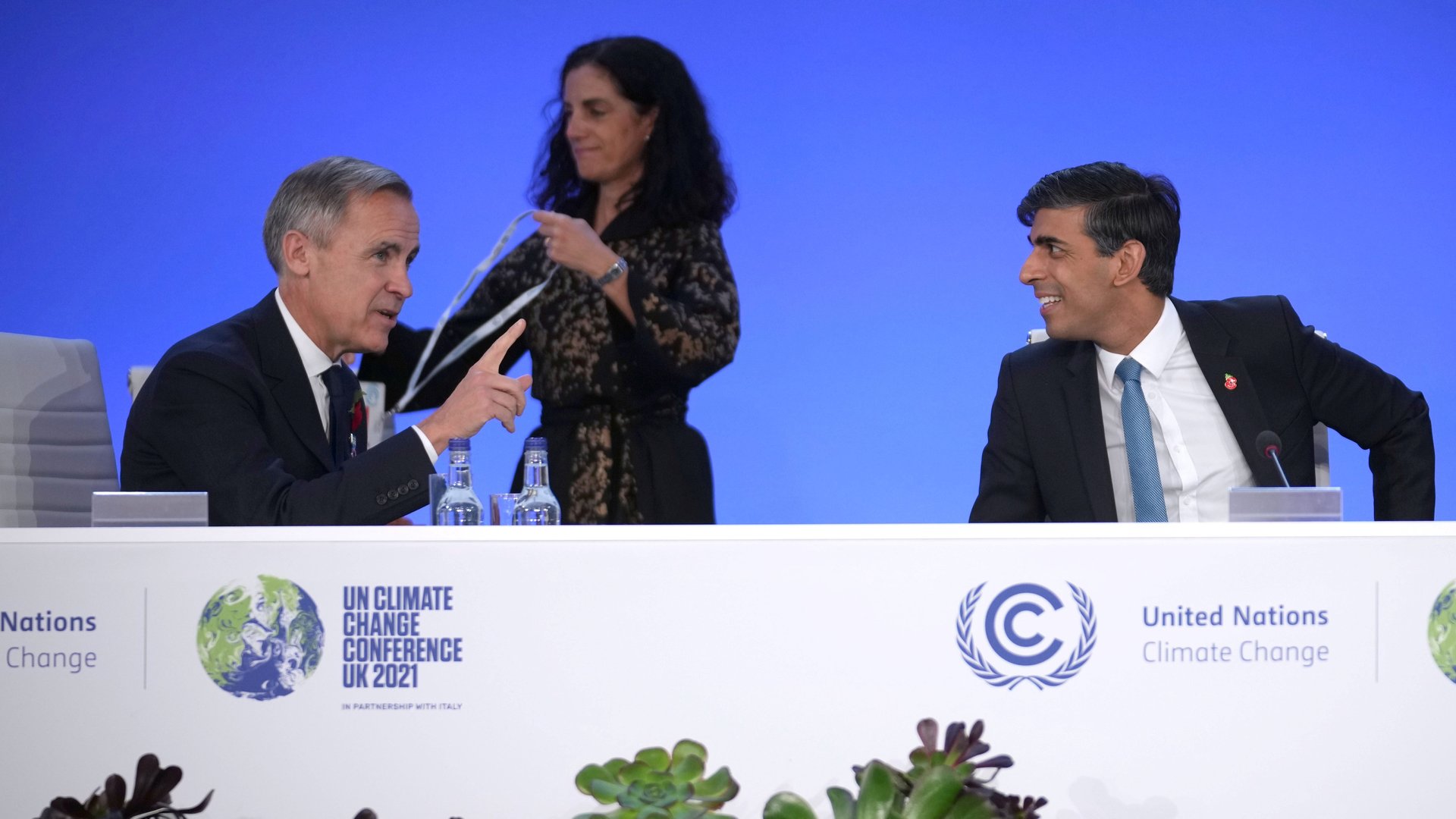Are financiers greenwashing COP26?
COP26 is nominally about reducing carbon emissions, but in practice it’s largely about capital—namely moving more of it into clean energy and climate adaptation and away from fossil fuels.


COP26 is nominally about reducing carbon emissions, but in practice it’s largely about capital—namely moving more of it into clean energy and climate adaptation and away from fossil fuels.
In the first two days of the UN’s COP26 climate summit, several rich countries promised to do this, pledging more climate finance to poorer countries: $10 billion from Japan, $7 billion from Italy, $260 million from Ireland. Scotland became the first country to officially take responsibility for “loss and damage” from climate impacts in developing countries by donating $1.3 million to the Climate Justice Resilience Fund.
These commitments move the world closer to the long-sought public finance goal of $100 billion, US climate envoy John Kerry said.
But the big number dominating the talks on Nov. 3, which organizers dubbed “Finance Day,” was $130 trillion. That’s the value of assets held by 450 financial institutions in 45 countries that have committed to a net-zero emissions target across some or all of their portfolio.
That sum is 25 times higher than it was a year ago, according to the Glasgow Financial Alliance for Net Zero (GFANZ), a group organized by former Bank of England governor Mark Carney. Firms including banks, asset managers, and insurers are responding to public and government pressure to act on climate and face a future where high-carbon assets could become a major liability.
In theory, these institutions have enormous power to push companies to decarbonize. In practice, progress across the global economy has been relatively slow because capital is still flowing to most carbon-intensive industries, and because of the dearth of regulation.
The difference now, says Carney, is that a framework exists to incentivize emission reductions in the financial sector. “We now have the essential plumbing in place to move climate change from the fringes to the forefront of finance,” he said in a speech.
On Nov. 3, UK finance officials announced that financial institutions based there will be required to publish net-zero transition plans by 2023. Günther Thallinger, a senior executive with the insurer Allianz, called it “the mic drop moment of the COP.”
The problems with the finance sector’s COP26 summit net-zero commitments
Yet there’s little agreement across the financial sector on how to achieve these goals. Members of Carney’s group GFANZ are meant to set interim targets for 2025 or 2030 to fulfil long-term, net-zero plans. But no one agrees on what targets should cover and how to measure progress. Nor are financial firms required to commit to phasing out finance for oil and gas. In fact, an analysis by the Rainforest Action Network found fossil fuel financing from private banks has increased since the Paris Agreement was signed in 2015
That will ultimately need to change, said Sagarika Chatterjee, director of climate change at Principles for Responsible Investment, a UN-backed investor group that helps coordinate Carney’s group. “We need to see a lot more work happen within these alliances to get everyone up to accelerating a fossil fuel phaseout,” she said.
What’s more, the $130 trillion figure overstates how much money is actually dedicated to achieving net zero emissions. Most asset managers only include a portion of their entire portfolio in the target. For some, coverage is negligible: the Canadian branch of BMO Global Asset Management, a GFANZ member, said it will include just 0.55% of its assets under the net-zero target.
That gives institutions cover to appear green by focusing pressure on sectors relatively easy to decarbonize, while punting critical sectors, said Amanda Starbuck, investor program director for Australian activist group The Sunrise Project. Without strict international regulation, financiers will need to hold themselves to a higher standard, she said: “Asset managers who really are trying to do more should be shouting that they don’t want to be on the same press release as this BS.”